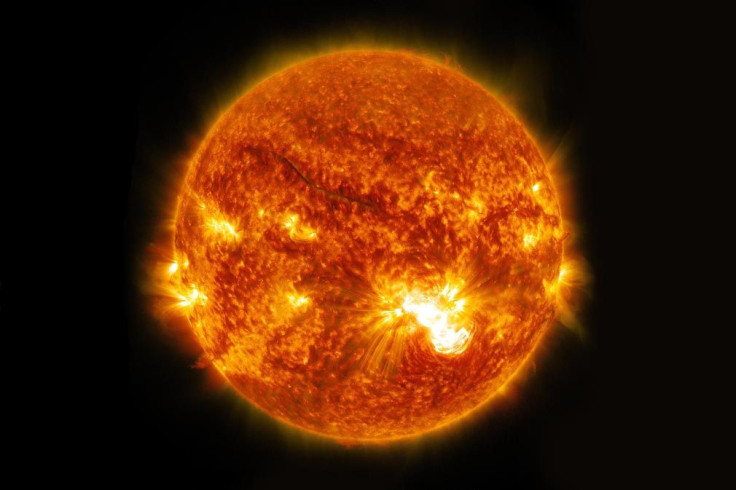Powerful Solar Flare Erupted Friday From Largest Sunspot In 24 Years

The sun emitted a powerful solar flare Friday, which was captured on camera by NASA's Solar Dynamics Observatory, or SDO. The solar flare erupted from a giant sunspot, which rotated from the left side of the sun to the right on Oct. 18.
According to NASA, Friday’s solar flare peaked at 5:40 p.m. EDT, and was classified as an X3.1-class flare. X-class refers to the most intense solar flares, while the number provides more information about its strength, the space agency said, adding that an X2-class flare is twice as intense as an X1, while an X3 is three times as intense.
The most powerful flare measured with modern methods was in 2003, during the last solar maximum, and it was so powerful that it overloaded the sensors measuring it, NASA said.
Solar flares, which are powerful bursts of radiation observed over the sun’s surface or the solar limb, send energy, light and high speed particles into space. These flares are often associated with solar magnetic storms known as coronal mass ejections, or CME.
If directed at Earth, powerful solar flares and associated CMEs can harm satellites, communications systems, ground-based technologies and power grids. X-class solar flares on Dec. 5 and Dec. 6 in 2006, for example, triggered a CME, which interfered with GPS signals that were sent to ground-based receivers.
NASA also stated that the flare, erupted on Friday, originated from a gigantic sunspot, labeled AR 12192, which was responsible for three other substantial flares since Oct. 19.
The giant sunspot, which is the largest in 24 years, is almost 80,000 miles across -- enough for 10 Earths to be laid across its diameter. The largest sunspot, observed in 1947, was almost three times as large as AR 12192.
© Copyright IBTimes 2024. All rights reserved.






















